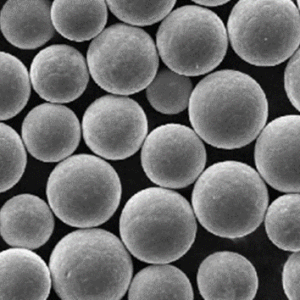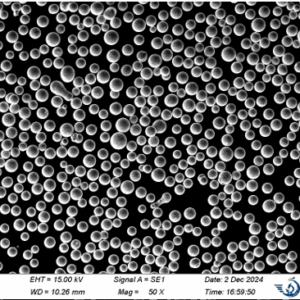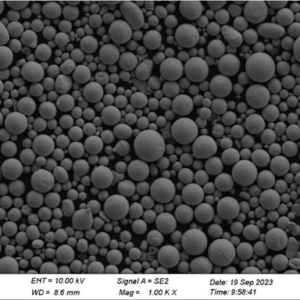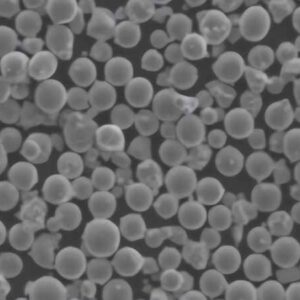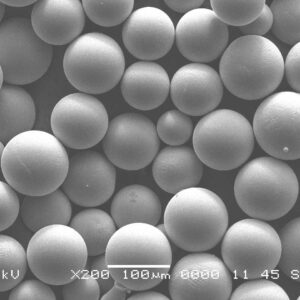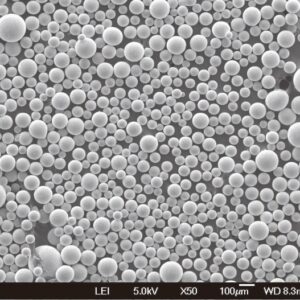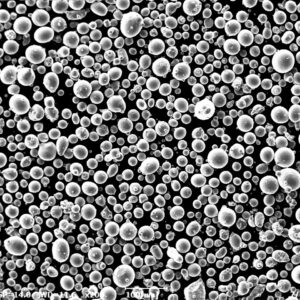マルチマテリアル構造 はエンジニアリングの最先端を行くものであり、異なる素材をブレンドすることで、各素材のユニークな特性を生かしたコンポーネントを作り出します。このアプローチにより、エンジニアやデザイナーは製品の機械的、熱的、審美的特性を調整することができ、航空宇宙、自動車、家電製品などの産業で大きな進歩につながっている。
この記事では、マルチマテリアル構造の世界を深く掘り下げます。使用されるさまざまな種類の素材、その組成、特性、用途を探ります。また、様々なマルチマテリアル構造を比較し、その利点と限界を分析し、この魅力的な分野の将来について洞察します。
マルチマテリアル構造の概要
マルチマテリアル構造とは、2つ以上の素材を1つの部品に統合する革新的なアプローチである。このコンセプトは、それぞれの素材の長所を生かし、単一の素材のみを使用した場合の限界を克服するものである。
例えば自動車産業では、アルミニウムのような金属とポリマーを組み合わせることで、軽量かつ強靭な構造を実現し、燃費と安全性を高めることができる。航空宇宙産業では、炭素繊維とチタンを統合することで、高性能航空機に不可欠な、極めて高い強度と軽量性を兼ね備えた部品を製造することができる。
マルチマテリアル構造の主な利点
- パフォーマンスの向上: 材料を組み合わせることで、優れた機械的特性と熱的特性を得ることができる。
- 軽量化: マルチマテリアル構造は多くの場合、強度を犠牲にすることなく部品を軽量化する。
- コスト効率: あまり重要でない部分に安価な材料を使用することで、全体的なコストを削減することができる。
- デザインの柔軟性: 単一素材の部品では不可能だった革新的な設計が可能になる。
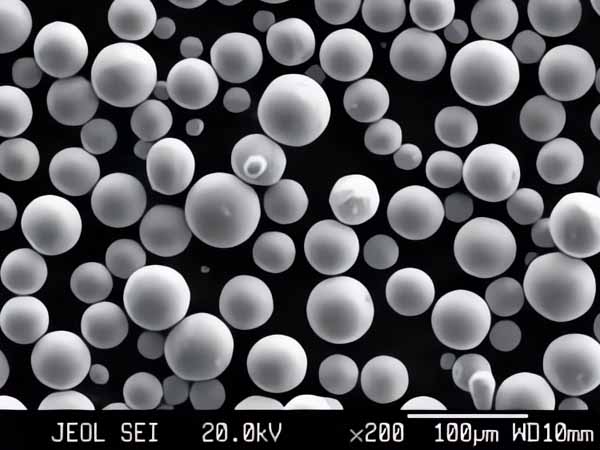
構成 マルチマテリアル構造
マルチマテリアル構造の構成は、用途や求められる特性によって大きく異なる。一般的に、これらの構造体には金属、ポリマー、セラミック、複合材料が組み合わされている。
マルチマテリアル構造に使用される主要素材
| 素材 | タイプ | 構成 | プロパティ | アプリケーション |
|---|---|---|---|---|
| アルミニウム合金 | メタル | Al + Mg, Si, Cu | 軽量、耐食性、延性 | 自動車、航空宇宙 |
| チタン合金 | メタル | Ti + Al, V | 高強度、軽量、耐食性 | 航空宇宙、医療用インプラント |
| カーボンファイバー | コンポジット | 炭素繊維+樹脂 | 非常に丈夫で軽量 | 航空宇宙、スポーツ用品、自動車 |
| ポリマーコンポジット | コンポジット | ポリマーマトリックス+補強材(ガラス、カーボン) | 多用途、軽量、強力 | 自動車、家電 |
| セラミックス | 非金属 | SiC、Al2O3 | 硬い、脆い、耐高温性 | 切削工具、エレクトロニクス、航空宇宙 |
| ステンレス鋼 | メタル | Fe + Cr, Ni | 強度、耐食性、耐久性 | 建設、自動車、医療機器 |
| 銅合金 | メタル | Cu + Zn, Sn | 優れた導電性、耐食性 | 電気部品、配管 |
| ニッケル合金 | メタル | Ni + Cr, Mo, Fe | 耐高温性、耐食性 | 航空宇宙、化学処理 |
| ガラス繊維 | コンポジット | ガラス繊維+ポリマー | 丈夫、断熱、軽量 | 建設、自動車、船舶 |
| マグネシウム合金 | メタル | Mg+Al、Zn | 超軽量、良好な加工性 | 自動車、航空宇宙、エレクトロニクス |
マルチマテリアル構造の特性と特徴
マルチマテリアル構造の特性は、使用する材料とその組み合わせ方に大きく依存する。以下に、考慮すべき主な特性をいくつか挙げる。
マルチマテリアル構造の主な特徴
| プロパティ | 説明 | 影響要因 |
|---|---|---|
| 機械的強度 | 壊れたり変形したりすることなく力に耐える能力。 | 材料構成、接合技術、構造設計 |
| 熱伝導率 | 熱を効率的に伝導する能力。 | 使用材料、材料間の界面 |
| 耐食性 | 過酷な環境下での劣化に耐える能力。 | 材料の選択、保護コーティング |
| 重量 | 構造体の質量。軽量化が不可欠な用途では極めて重要である。 | 素材密度、デザイン |
| 耐疲労性 | 故障することなく、繰り返し荷重と除荷のサイクルに耐える能力。 | 材料の選択、接着の質 |
| 耐衝撃性 | 突発的な衝撃の際にエネルギーを吸収・発散する能力。 | 材料の靭性、複合材料の積層化 |
| 美的アピール | 消費者の嗜好に影響を与える可能性のある、構造の視覚的・触覚的品質。 | 表面仕上げ、素材の組み合わせ |
| 電気伝導率 | 電気を通す能力で、電子機器に重要。 | 使用される金属と複合材料の種類 |
マルチマテリアル構造の種類
マルチマテリアル構造には様々な種類があり、それぞれが異なる産業における特定の要件を満たすように設計されている。最も一般的なタイプには、以下のようなものがある:
ハイブリッド金属複合構造
これらの構造は、アルミニウムやスチールのような金属と炭素繊維のような複合材料を組み合わせたものである。その結果、金属の強度と複合材料の軽量性の利点を併せ持つ部品ができる。これらは、自動車産業や航空宇宙産業で一般的に使用されている。
金属-ポリマー構造
このタイプでは、アルミニウムやマグネシウムなどの金属がポリマーと組み合わされ、軽量で耐食性に優れた部品が作られる。このような構造は、民生用電子機器や自動車用途でよく使用される。
マルチメタル構造
マルチメタル構造は、アルミニウムとスチール、銅とニッケルといった異なる金属を統合したものである。このタイプの構造は、高い強度と熱伝導性の組み合わせを必要とする用途で特に有益です。
セラミック-金属構造
セラミック-金属構造は、セラミックの硬度と高温耐性を金属の靭性と組み合わせたものである。これらは切削工具、航空宇宙部品、電子機器などに使用されている。
3Dプリンターによるマルチマテリアル構造
3Dプリンティングの進歩により、材料分布を正確に制御した複雑なマルチマテリアル構造の作成が可能になった。この技術は、医療用インプラント、航空宇宙、プロトタイピングなどの業界に革命をもたらしている。
応用例 マルチマテリアル構造
マルチマテリアル構造は、様々な産業において幅広い用途があります。以下に、主な用途を表にまとめた。
マルチマテリアル構造の応用
| 産業 | 申し込み | 使用材料 | メリット |
|---|---|---|---|
| 自動車 | ボディパネル、シャシー部品、エンジン部品 | アルミニウム、カーボンファイバー、ポリマー | 軽量化、燃費向上、安全性 |
| 航空宇宙 | 機体部品、タービンブレード、着陸装置 | チタン合金、炭素繊維、セラミックス | 強度重量比、耐高温性 |
| コンシューマー・エレクトロニクス | スマートフォン、ノートパソコン、ウェアラブル機器 | マグネシウム合金、ポリマー、ガラス繊維 | 軽量、耐久性、美しさ |
| 医療機器 | インプラント、手術器具 | チタン、ステンレス鋼、ポリマー | 生体適合性、強度、耐食性 |
| 建設 | 構造部材、ファサードパネル、断熱材 | スチール、ガラス繊維、ポリマー | 強度、耐久性、断熱性 |
| マリン | 船体部品、プロペラ、甲板構造物 | アルミニウム、ステンレス鋼、複合材料 | 耐食性、軽量、強度 |
| エネルギー | 風力タービンブレード、ソーラーパネルフレーム、パイプライン部品 | 複合材料、ステンレス鋼、セラミック | 耐久性、耐環境性 |
| スポーツ用品 | 自転車フレーム、ゴルフクラブ、ヘルメット | カーボンファイバー、アルミニウム、ポリマー | 軽量、高性能、耐久性 |
| 化学処理 | リアクター、配管、バルブ | ニッケル合金、セラミックス、ステンレス鋼 | 耐食性、高温能力 |
| ディフェンス | 装甲板、ミサイル部品、構造部品 | チタン合金、複合材料、セラミックス | 防弾、軽量、高強度 |
仕様、サイズ、等級、規格
マルチマテリアル構造を選択する際には、適用される仕様、サイズ、等級、規格を考慮することが不可欠です。以下は、重要な点をまとめた表である。
マルチ・マテリアル・ストラクチャーの仕様、サイズ、等級、規格
| 素材 | 仕様 | サイズ | グレード | 規格 |
|---|---|---|---|---|
| アルミニウム合金 | ASTM B209、EN AW-2024、EN AW-7075 | シート、プレート、押出材、チューブ | 2024, 7075, 6061 | ISO 9001、ASM B211 |
| チタン合金 | ASTM B265、Ti-6Al-4V | 板、棒、鍛造品 | Ti-6Al-4V, Ti-6Al-4V ELI | AMS4928、ASM F136 |
| カーボンファイバー | ASTM D3039、ISO 14129 | ロール、プリプレグ、パネル | T300、T700、M55J | ASTM D7264、ISO 13019 |
| ポリマーコンポジット | ASTM D5956、ISO 14693 | シート、ロッド、カスタム形状 | SMC、BMC、CFRP | ASTM D5766、ISO 75-2 |
| セラミックス | ASTM C1161、ISO 6872 | カスタム形状、プレート、ロッド | Al2O3、SiC、ZrO2 | ISO 6872、ASM C1161 |
| ステンレス鋼 | A240, ISO 15510 | シート、プレート、パイプ、バー | 304、316、17-4ph | ASME SA240、ASME A312 |
| 銅合金 | アストレムB281、アストレムB622 | チューブ、シート、ロッド | C11000、C70600 | ASMB134、ISO281 |
| ニッケル合金 | アストレムB443、アストレムB564 | バー、プレート、シート | インコネル625、モネル400 | ASMB444、ISO6265 |
| ガラス繊維 | ASTM D3808、ISO 13019 | シート、ロッド、織物 | Eガラス、Sガラス | ASMD3039、ISO9001 |
| マグネシウム合金 | ASMB90、AMS4375 | シート、バー、押出材 | AZ31B、ZK60 | ASMB107、ISO6892 |
マルチ・マテリアル・ストラクチャーのサプライヤーと価格設定
信頼できるサプライヤーを見つけ、複数の材料からなる構造物の価格設定を理解することは、十分な情報に基づいた意思決定を行う上で極めて重要です。ここでは、注目すべきサプライヤーと、様々な材料の代表的な価格についてご紹介します。
マルチマテリアル構造のサプライヤーと価格設定
| 素材 | サプライヤー | 一般的な価格帯 | 説明 |
|---|---|---|---|
| アルミニウム合金 | カイザー・アルミニウム、コンステリウム | 1ポンドあたり$2~$6 | アルミニウム製品の大手サプライヤー |
| チタン合金 | ティメット、VSMPO-アビスマ | 1ポンドあたり$20~$50 | チタン合金の主要メーカー |
| カーボンファイバー | ヘクセル, 東レ | 1ポンドあたり$30~$80 | 炭素繊維のトップメーカー |
| ポリマーコンポジット | オーエンズ・コーニング、SGLカーボン | 1ポンドあたり$10~$50 | 様々な複合材料のプロバイダー |
| セラミックス | サンゴバン、京セラ | 1ポンドあたり$15~$100 | 有名なセラミック材料サプライヤー |
| ステンレス鋼 | アウトクンプ、アペラム | 1ポンドあたり$3~$10 | ステンレス鋼の主要サプライヤー |
| 銅合金 | ミューラー・インダストリーズ、ヴィーランド | 1ポンドあたり$4~$12 | 銅合金の著名なサプライヤー |
| ニッケル合金 | ヘインズ・インターナショナル、特殊金属 | 1ポンドあたり$50~$150 | ニッケル合金の専門サプライヤー |
| ガラス繊維 | オーエンズ・コーニング、十思グループ | 1ポンドあたり$5~$15 | ガラス繊維材料の主要サプライヤー |
| マグネシウム合金 | マグネシウム・エレクトロン、UACJ | 1ポンドあたり$8~$25 | マグネシウム合金の主要サプライヤー |
の利点と限界 マルチマテリアル構造
マルチマテリアル構造には数多くの利点があるが、同時に一定の制限もある。ここでは、その利点と潜在的な欠点を理解するのに役立つ比較を紹介する。
マルチマテリアル構造の利点と限界
| アスペクト | メリット | 制限事項 |
|---|---|---|
| 強度重量比 | 最適なパフォーマンスを発揮するために素材を組み合わせ、軽量化しながら強度を高めている。 | 複雑な製造工程はコストを増加させる可能性がある。 |
| デザインの柔軟性 | 革新的な設計と特定の用途に合わせた特性を可能にする。 | 異なる素材を統合すると、設計や組み立てが複雑になる可能性がある。 |
| コスト効率 | あまり重要でない部分に費用対効果の高い材料を使用できるようにする。 | マルチマテリアル製造の初期設定コストは高くつく可能性がある。 |
| 耐久性 | 摩耗、腐食、その他の環境要因に対する耐性が向上。 | 材料の互換性と接着に関する潜在的な問題。 |
| 熱的・電気的特性 | 材料の組み合わせにより、オーダーメイドの熱的・電気的特性を提供。 | 所望の特性を得るためには、材料界面を正確に制御する必要がある。 |
| 環境への影響 | 軽量設計と効率化により、環境への影響を低減できる可能性がある。 | 複数の素材を使用することは、リサイクルと廃棄を複雑にする可能性がある。 |

よくあるご質問
マルチマテリアル構造に関する一般的な質問に対する包括的なFAQセクションです。
| 質問 | 回答 |
|---|---|
| マルチマテリアル構造とは何か? | マルチマテリアル構造は、2つ以上の材料を組み合わせてそれぞれの特性を生かし、性能と効率を高める。 |
| マルチマテリアル構造を採用するメリットは? | これらの部品は、単一素材の部品と比較して、性能の向上、軽量化、コスト効率、設計の柔軟性を提供する。 |
| マルチマテリアル構造を最も多く使用している産業は? | 航空宇宙、自動車、家電、医療機器、建築などの業界では、一般的にマルチマテリアル構造が使用されている。 |
| マルチマテリアル構造は製造業にどのような影響を与えるのか? | 異種材料の精密な統合と接着が必要なため、製造工程が複雑になる可能性がある。 |
| マルチマテリアル構造はシングルマテリアル構造より高価なのか? | 初期費用は高くつくが、性能の向上とライフサイクルコストの削減というメリットにより、初期費用の高さを相殺することができる。 |
| マルチマテリアル構造はリサイクル可能か? | リサイクルは素材の組み合わせによって困難な場合があるが、リサイクル技術の進歩によってこの点は改善されつつある。 |
結論と今後の展望
マルチマテリアル構造 は、エンジニアリングとデザインにおいて大きな進歩を遂げた。性能、重量、汎用性の面で比類ない利点を提供するため、さまざまなハイテク産業で好まれている。しかし、製造の複雑さやコストの面では課題もある。
技術の進歩に伴い、マルチマテリアルの設計や製造技術も革新が続くと予想される。高度な3Dプリンティングや新素材の複合材といった新たな技術は、マルチマテリアル構造の能力と応用を高めるだろう。
マルチマテリアル構造の未来は、エンジニアリングと設計のさらなる進歩を促し、産業全体にわたって、より効率的で効果的かつ持続可能なソリューションを約束する。



